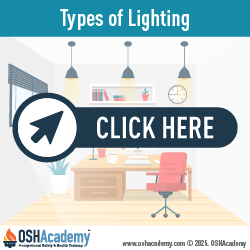The Training Room
Obstructions
Have you ever tried teaching in a room where posts, pillars, or other structures block your students' views? It can be frustrating, especially when you're trying to keep everyone engaged.
Space
Even if you don't get to choose the perfect space, you can still set it up in a way that supports your training goals and keeps your students engaged.
You'll probably have to work with whatever room is available, so it's important to make the most of it. Each student should have about 25 square feet—think of a 5x5 foot area per person. That gives enough room to keep about two feet of space between each student. Also, look for ceilings that are at least 10 feet high so you can use visual aids like projectors or posters without a problem.
A clear line of sight is key for effective learning. Make sure the screen, flipchart, or board is placed high enough so everyone can see it. Be careful where you put your projector or computer—avoid placing them where they block what you're showing. If possible, choose a training room with an open layout that doesn't include visual obstructions.
Lighting
Lighting plays a big role in how well your session goes. If the room is too dim, students may struggle to take notes—or worse, they might start nodding off. Always check that there's enough light for comfort and visibility. If your training room has windows, make sure the light coming in can be adjusted. Indirect or ambient light works best because it cuts down on glare. Direct sunlight behind your screen can make your visuals hard to see. If the room is used frequently, consider having dimmer switches instead of just on/off options. Being able to fine-tune the lighting can really improve the training experience.
Ambient light is generally considered best for classroom training for several reasons:
- Reduced Eye Strain and Fatigue: Ambient lighting provides a uniform light level throughout the room, reducing the contrast between light sources and the rest of the environment. This can help in minimizing eye strain and fatigue, which is particularly important in settings where students are required to focus for extended periods.
- Improved Visibility and Comfort: Proper ambient lighting ensures that all areas of the classroom are well-lit, which can improve visibility and reading comfort. This is crucial for tasks such as reading, writing, and using computers.
- Enhanced Learning Environment: Good lighting can create a more comfortable and welcoming environment, which can positively affect students' mood and motivation. A well-lit environment is conducive to learning and can help in maintaining attention.
- Reduced Glare and Shadows: Ambient light, especially when diffused, can reduce glare on surfaces like whiteboards or screens, and minimize shadows that can be distracting or obstruct visibility.
- Energy Efficiency: With advancements in lighting technology, ambient lighting solutions can be energy efficient, reducing costs for educational institutions. LED lights, for example, consume less power and have a longer lifespan compared to traditional lighting solutions.
- Flexibility: Ambient lighting can be adjusted to suit different activities and times of the day, which is beneficial in a classroom setting where various activities take place.
It's important to note that while ambient light is generally beneficial, it's also crucial to balance it with task lighting where necessary, to ensure that specific areas of the classroom can be illuminated more intensely for focused activities. The overall goal is to create a lighting environment that supports the diverse needs of educational activities.
Knowledge Check Choose the best answer for the question.
1-7. How much physical space should each student have while participating in classroom training?
You forgot to answer the question!

